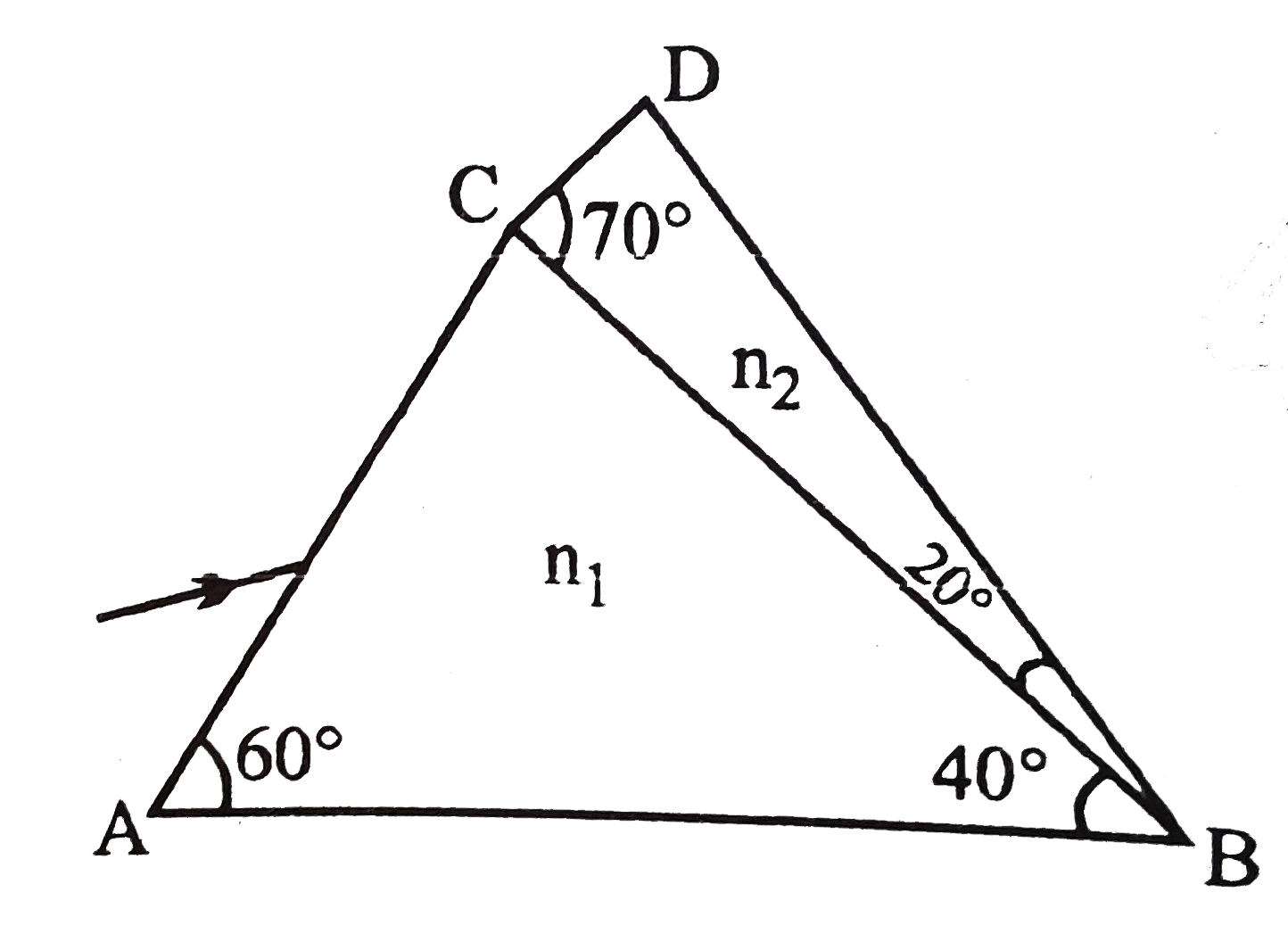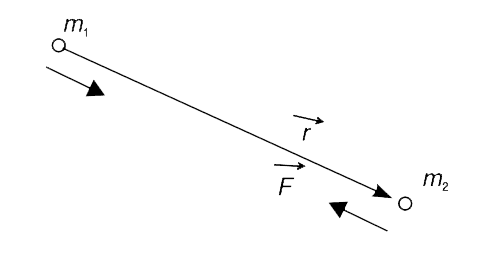Two stationary particles of masses M1 and M2 are at a distance d apart. A third particle, lying on the line joining the particles experiences no resultant gravitational forces. What is the distance of this particle from M1.Solution in Gujrati
_S01_002_S01.png)
The force on m towards M1 is F1=GM1mr2
the force on m towards M2 is F2=GM2m(d−r)2
According to question net force on m is zero i.e., F1=F2
⇒GM1mr2=GM2m(d−r)2⇒(d−rr)2=M2M1⇒dr−1=√M2√M1⇒r=d[√M1√M1+√M2]
this point is called neutral point.
Topper's Solved these Questions
- GRAVITATIONBOOK - ALLEN CHAPTER - GRAVITATIONEXERCISE - Exercise 1 (Check your Grasp)
28 Videos
- GRAVITATIONBOOK - ALLEN CHAPTER - GRAVITATIONEXERCISE - Exercise 2 (Brain Teasers)
27 Videos
- GEOMETRICAL OPTICSBOOK - ALLEN CHAPTER - GEOMETRICAL OPTICSEXERCISE - subjective
14 Videos
- KINEMATICS-2DBOOK - ALLEN CHAPTER - KINEMATICS-2DEXERCISE - Exercise (O-2)
47 Videos
Similar Questions
Three identical point mass each of mass 1kg lie in the x-y plane at point (0,0), (0,0.2m) and (0.2m, 0). The net gravitational force on the mass at the origin is
View SolutionOne projectile after deviating from its path starts moving round the earth in a circular path of radius equal to nine times the radius of earth R. Its time period is
View SolutionA prism of refractive index n1 & another prism of reactive index n2 are stuck together without a gap as shown in the figure.The angle of the prisms are as shown. n1&n2depend onλ,the wavelength of light according to n1=1.20+10.8×104λ2&n2=1.45+1.80×104λ2 where λ is in nm.

(i)Calculate the wavelength λ0for which rays incident at any angle on the interfaceBCpass through without bending at that interface.
(ii) for light of wavelength λ0,find the angle of incidencei on faceACsuch that the deviation produced by the combination of prism is minimum.
View SolutionA particle is moving in xy-plane .At certain instant the components of its velocity and acceleration are as follows ux=3m/s,uy=4m/s,ax=2m/s2anday=1m/s2. The rate of change of speed at this moment is
View SolutionThe gravitational force between two particles of masses m_(1) and m_(2) separeted by the same distance, then the gravitational force between them will be
View SolutionTwo particles of mass m1andm2 are in space at separation →r [vector from m(1) to m2]. The only force that the two particles experience is the mutual gravitational pull. The force applied by m1onm2is→F. Prove that μd2→rdt2=→F where μm1m2m1+m2 is known as reduced mass for the two particle system .

View SolutionA particle of mass m_(1) collides head on with a stationary particles of mass m_(2) . If (m_(1))/(m_(2)) gte, where e is the coefficient of restitution, then :
View SolutionConsider a system of two particles having masses m_(1) and m_(2) . If the particle of mass m_(1) is pushed towards the centre of mass of particles through a distance d , by what distance would the particle of mass m_(2) move so as to keep the mass centre of particles at the original position?
View Solutionद्रव्यमान m1 तथा m2 के दो कण प्रारम्भ में एक - दूसरे से अनन्त दुरी पर स्थित रखे हैं| जब उनके बीच की दुरी d हो तो m2 का m1 के सापेक्ष वेग ज्ञात कीजिए |
View SolutionA system of two particles is having masses m_(1) and m_(2) . If the particle of mass m_(1) is pushed towards the centre of mass of particles through a distance d, by what distance the particle of mass m_(2) should be moved so as to keep the centre of mass of particles at the original position ?
View SolutionThe position of centre of mass of a system consisting of two particles of masses m_(1) and m_(2) seperated by a distance L apart , from m_(1) will be :
View SolutionThe centre of mass of a system of two particles of masses m_(1) and m_(2) is at a distance d_(1) from m_(1) and at a distance d_(2) from mass m_(2) such
View SolutionThe distance between two particles of masses m1andm2 is r. If the distance of these particles from the centre of mass of the system are r1andr2 respectively, then show that r1=r(m2m1+m2)andr2=r(m1m1+m2)
View SolutionA system of two particles is having masses m_(1) and m_(2) If the particle of mass m, is pushed towards the center of mass of particles through a distance d. by what distance the particle of mass m_(2) should be moved so as to keep the centre of mass of particles at the original position?
View SolutionTwo particles of masses m1andm2(m1m2) are separated by a distance d.. The shift in the centre of mass when the two particles are interchanged.
View SolutionA particle of mass m1 (A) elastically collides with another stationary particle (2) of mass m2. Then :
View Solution
